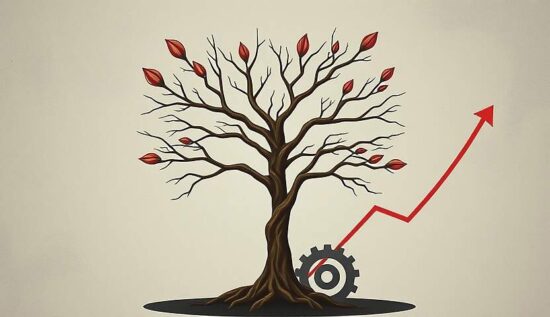Russia’s Economic Development in 2024: Uncertainty Lingers
The Russian government has not yet released the official statistics on the country’s economic growth in 2024, but the International Monetary Fund (IMF) has already revised its forecast to 3.8% in nominal terms, up from 3.6%. The Ministry of Economic Development estimates the growth at 3.9%.
However, the IMF has also forecast a significant slowdown in Russia’s economic growth in 2025, to 1.6%. This is not a new development, as the IMF has been revising its forecast for Russia’s growth in 2024 several times, from 0.3% in January to 2.2% in October, with the actual growth potentially reaching 4%.
The Central Bank of Russia shares the IMF’s pessimistic view, predicting a growth of 0.5-1.5% in 2025 and 1-2% in 2026.
Russia’s economic growth in 2023 and 2024 was driven by increased government spending in the defense and infrastructure sectors, as well as investments in new production facilities, particularly in the defense and key industries under the import substitution program.
However, the growth was largely achieved by utilizing the existing capacity and the potential for further growth is limited. The only way to increase the physical volume of industrial production is through the introduction of new production facilities or significant labor productivity improvements in existing facilities.
The question is, where will the funds for these investments come from? Foreign investments are unlikely and domestic investments at the current interest rates of the Central Bank are not feasible. The only remaining option is monetary emission, which would likely accelerate inflation.
The Inflation-Battling Central Bank
The Central Bank’s high interest rates are aimed at combating inflation, but they have a limited impact on the overall economy. The high interest rates mainly affect private households, as they reduce the availability of credit for consumption and investment. The government, on the other hand, can still finance its projects through the budget.
The high interest rates also lead to a redistribution of funds, as the government’s support for investments in the form of subsidies and guarantees is more effective than the Central Bank’s direct support through low interest rates.
The Russian banking system is not designed for long-term investments in industrial projects, as the majority of the banks’ profits come from short-term transactions and foreign exchange operations.
The country needs new structures that can channel investments into industrial projects, such as state-owned leasing companies that can provide long-term loans at a reasonable interest rate, around 2-6%. These companies should support the purchase of new equipment and the development of new projects, not just for large state-owned companies but also for medium-sized enterprises that can contribute to the country’s economic growth.
In conclusion, the Russian economy is facing a challenging period and the government’s policies should be adjusted to support the country’s industrial development and reduce its reliance on foreign capital. The introduction of new structures and mechanisms is necessary to channel investments into the real sector of the economy and promote sustainable growth.





